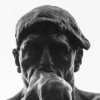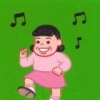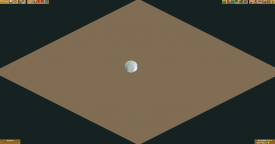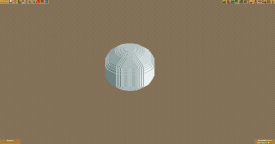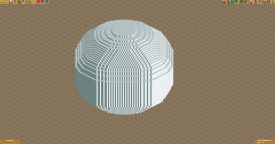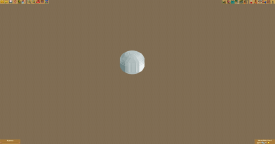RCT Discussion / Mathematics in RCT
-
 25-January 21
25-January 21
-
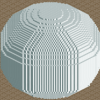
 Timothy Cross
Offline
I’m an uneducated high school drop out and former drug addict but I looked it up and I now believe I’ve always been right honestly. Hopefully you’ll find it inspiring.
Timothy Cross
Offline
I’m an uneducated high school drop out and former drug addict but I looked it up and I now believe I’ve always been right honestly. Hopefully you’ll find it inspiring.
“The astronomer Galileo Galilei in his Il Saggiatore wrote that "[The universe] is written in the language of mathematics, and its characters are triangles, circles, and other geometric figures."Artists who strive and seek to study nature must first, in Galileo's view, fully understand mathematics. Mathematicians, conversely, have sought to interpret and analyse art through the lens of geometry and rationality. The mathematician Felipe Cucker suggests that mathematics, and especially geometry, is a source of rules for "rule-driven artistic creation", though not the only one.”
“The mathematician Jerry P. King describes mathematics as an art, stating that "the keys to mathematics are beauty and elegance and not dullness and technicality", and that beauty is the motivating force for mathematical research. King cites the mathematician G. H. Hardy's 1940 essay A Mathematician's Apology. In it, Hardy discusses why he finds two theorems of classical times as first rate, namely Euclid's proof there are infinitely many prime numbers, and the proof that the square root of 2 is irrational. King evaluates this last against Hardy's criteria for mathematical elegance: "seriousness, depth, generality, unexpectedness, inevitability, and economy" (King's italics), and describes the proof as "aesthetically pleasing". The Hungarian mathematician Paul Erd?s agreed that mathematics possessed beauty but considered the reasons beyond explanation: "Why are numbers beautiful? It's like asking why is Beethoven's Ninth Symphony beautiful. If you don't see why, someone can't tell you. I know numbers are beautiful.””
I not only remain convinced of mathematics in the elements in RCT (including landscaping), I believe it can be both left brained AND right brained, and I further argue that it should be adhered to by rule. The isometric view, units of heights, width and shape, within the use of both positive and negative space, provide an ideal arena for an altogether perfected composition and fully necessary way of thinking. If ever by some miracle I played this game again, I would use it myself. Though here I suppose we can at least discuss what place if any you believe mathematics to have in RCT; or any connections you may see. Though note that taking the isometric view into consideration in any form is already mathematics at use without yet realizing it. This game is math.
At least scroll down and read “A Complex Relationship”.
https://en.m.wikiped...ematics_and_art -

 Tolsimir
Offline
Tolsimir
Offline
I study math myself and can see why you would call some stuff "aesthetically pleasing". In my opinion this is a little romantized though. I think I would go with what Erdos says. It always lies in the eye of the observer. There are proofs that one calls 'elegant' and others that you can call 'messy' but the reason behind this is rather a line between a clever proof using cross connections of different fields in math with already proven results and just brute force computation of whatever you want to show.
Also it is inevitable to agree that math appears everywhere in the world the reason behind this being that on the one hand the world just consists of small pieces put together following the simplest geometrical rules. But on the other hand you should not forget that the discovery of math has always been driven by the observation of nature. So it's no surprise that you can find concepts in math that describe nature's behaviour. However in my opinion you don't have to follow mathematical laws strictly to get something that looks good.
-

 Timothy Cross
Offline
Considering even “organic” geometric shapes in RCT are pixilated and every object or combination of objects is formed of a number of the tiniest precise geometric shapes, position in a given area with positive and negative space is dependent on measurements to make up the desired aesthetic of form, shape and space, and a great number of possibilities are available. Things can look good by eyeing them without mathematic consideration, but for certain perfection as to what one wants to achieve visually, I believe this kind of thought process for this particular game is necessary. Architecture and coasters I think are easy to see mathematically, but also mathematics in RCT used for curvature guarantee the most smooth shape; landscaping also with a number of precise measurements appears the most organic in the total of its vertical or horizontal changes; and even rock work can use math while still given the impression as being random, but with a better thought process, and a more solidified goal aesthetic.
Timothy Cross
Offline
Considering even “organic” geometric shapes in RCT are pixilated and every object or combination of objects is formed of a number of the tiniest precise geometric shapes, position in a given area with positive and negative space is dependent on measurements to make up the desired aesthetic of form, shape and space, and a great number of possibilities are available. Things can look good by eyeing them without mathematic consideration, but for certain perfection as to what one wants to achieve visually, I believe this kind of thought process for this particular game is necessary. Architecture and coasters I think are easy to see mathematically, but also mathematics in RCT used for curvature guarantee the most smooth shape; landscaping also with a number of precise measurements appears the most organic in the total of its vertical or horizontal changes; and even rock work can use math while still given the impression as being random, but with a better thought process, and a more solidified goal aesthetic. -

 MrTycoonCoaster
Offline
Profound subject, very interesting.Mathematics is incredible, I believe it is the foundation of everything that exists.
MrTycoonCoaster
Offline
Profound subject, very interesting.Mathematics is incredible, I believe it is the foundation of everything that exists. -

 Cocoa
Offline
Cocoa
Offline
you're gonna love Godel's theorem. Look up douglas hofstaders writing on it for some hot shit.
(while you're at it, just read the whole book Godel, Escher, Bach. you're gonna froth!)
-

 Ge-Ride
Offline
Ge-Ride
Offline
What sorts of math are the most useful for RCT2 and LL outside of coding? I don't know when math is all that useful aside from using scenery to approximate the circumference of large circles and the surface of spheres. I suppose you need math for fancy modern architecture and effective layouts but that can also be done largely by feel if you're one who has the knack.
-

 Cocoa
Offline
Cocoa
Offline
I was not being sarcastic at all, haha. Godel's theorem is very exciting for someone into mathematics, and the book Godel, Escher, Bach connects the aesthetic threads of godel's theorem, bach's music, and escher's art in an alice-in-wonderland style to talk about the brain and cognitive science. One of my favorite books.
-

 Timothy Cross
Offline
Timothy Cross
Offline
Well I feel silly. Very sorry.I was not being sarcastic at all, haha. Godel's theorem is very exciting for someone into mathematics, and the book Godel, Escher, Bach connects the aesthetic threads of godel's theorem, bach's music, and escher's art in an alice-in-wonderland style to talk about the brain and cognitive science. One of my favorite books.
Is it universally understood?What sorts of math are the most useful for RCT2 and LL outside of coding? I don't know when math is all that useful aside from using scenery to approximate the circumference of large circles and the surface of spheres. I suppose you need math for fancy modern architecture and effective layouts but that can also be done largely by feel if you're one who has the knack.
A ‘thought process’ available to the builder via RCT’s isometric grid system, of very simple math for the scale, space, shape, position, and symmetry or asymmetry etc. of things in isometric compositions and forming an overall desired aesthetic, while everything is formed together as a single composition on a map perfected by math. I suppose an example might be a thought process of strictly adhering to an equation such as a tower with a certain height covering a number of tiles and desiring precisely twice as much negative space (in view) surrounding it. Or one might want paths in a Main Street providing breathing space as exactly twice the width of each particular building on it’s sides. Also, organic shapes can be made in multiplication or division, such as for creating circles. And I’ve used a sort of this thought process before in landscaping (most of it not shown), for creating land forms such as mesas or buttes, as well as realistically shaped mountains or hills, etc. and water bodies as perfectly curved as ponds or lakes or coasts can get in the game. Plus I’m certain with numerous equations it’s a process to achieve the spaceship earth Epcot sphere. Further the isometric view with math considered could ensure all angles and zooms are pleasing to the eye. And with math considered, an aesthetic would avoid messiness completely, if things such as color or texture are well done. It seems silly to me explaining all this because it’s simple and I’d think everyone already understands measurements, geometry etc. at use in the game. But I forgot where I was going with this thread.
I guess I just like the idea of using math in art a little too much. But the wiki I posted proves it’s usage. -

 Ge-Ride
Offline
Ge-Ride
Offline
Well I feel silly. Very sorry.
Is it universally understood?
A ‘thought process’ available to the builder via RCT’s isometric grid system, of very simple math for the scale, space, shape, position, and symmetry or asymmetry etc. of things in isometric compositions and forming an overall desired aesthetic, while everything is formed together as a single composition on a map perfected by math. I suppose an example might be a thought process of strictly adhering to an equation such as a tower with a certain height covering a number of tiles and desiring precisely twice as much negative space (in view) surrounding it. Or one might want paths in a Main Street providing breathing space as exactly twice the width of each particular building on it’s sides. Also, organic shapes can be made in multiplication or division, such as for creating circles. And I’ve used a sort of this thought process before in landscaping (most of it not shown), for creating land forms such as mesas or buttes, as well as realistically shaped mountains or hills, etc. and water bodies as perfectly curved as ponds or lakes or coasts can get in the game. Plus I’m certain with numerous equations it’s a process to achieve the spaceship earth Epcot sphere. Further the isometric view with math considered could ensure all angles and zooms are pleasing to the eye. And with math considered, an aesthetic would avoid messiness completely, if things such as color or texture are well done. It seems silly to me explaining all this because it’s simple and I’d think everyone already understands measurements, geometry etc. at use in the game. But I forgot where I was going with this thread.
I guess I just like the idea of using math in art a little too much. But the wiki I posted proves it’s usage.I see your point on the double negative space. I hadn't known much about fractals before I retired. They are definitely useful for mountains and bodies of water in RCT. Personally though, my struggles have been with interactions between landscapes, paths, buildings, foliage and rides. It's the aesthetic stuff that seems to come naturally to most people here. I suppose I've got a rather limited visual imagination and just as importantly, I'm terrible at selecting objects for planning out parks. But maybe I just need to thumbnail everything more. I don't know.
-

 Liampie
Offline
Liampie
Offline
I'm not well versed in mathematics, but I know a little about geomorphology. A lot of the processes that shape the landscape can be explained with fairly simple equations and mathematics, for example when a flow of water turns from laminar to turbulent, the maximum slope angle at which foliage can still occupy terrain, or the rate at which weathering occurs. That said, these equations describe the processes, but not so much the actual landscapes formed by them. Looking for triangles, circles and perfect curves in the landscape is not taking into account billions of years of accumulated irregularities, and to me turns mathematics from a science into a speculative religion. Be careful with applying mathematics to designing a landscape.
Dr dirt has done landscapes with very fractal-like appearances. I think those have been very pretty, but also very artificial looking. Landscaping superimposed over a geometric pattern, and not an actual landscape. I can appreciate the aesthetic value, but I'd appreciate it all the same if it were the exact same pattern, but with any other random subject superimposed over it.
To me, the best looking and most believable landscapes are the ones that are irregular and imperfect.
-

 Liampie
Offline
Liampie
Offline
Cover the map in black tiles and make it a planet. Add more planets. I'd like to see a map like that, with space used as a canvas for mathematical playing around.
-

 Cocoa
Offline
Cocoa
Offline
i'm pretty sure you should be able to do a better sphere than that. look up minecraft sphere guides for help- yours is a bit more like a 27-hedral or something, ie seems to have flattened patches on it
-

 Timothy Cross
Offline
I think it might be the massive size of it? While building it, I figured that working in 64 1/8 pieces of height and width required 16 1/8 pieces for the “circular” flat areas. Though overall and in other areas of the curvature my calculations are probably off.
Timothy Cross
Offline
I think it might be the massive size of it? While building it, I figured that working in 64 1/8 pieces of height and width required 16 1/8 pieces for the “circular” flat areas. Though overall and in other areas of the curvature my calculations are probably off. -

 Liampie
Offline
Liampie
Offline
If it were a perfect globe, the circumference at any point would be a perfect circle. If you take the circumference along the 'equator' of this globe, the result is closer to an octagon. And if you follow the contours of the globe from our viewing angle, it's not a perfect circle either. The fact that the sides are squares and not circles like the top, is also telling. It's a very good effort but you're not there yet.
-

 RWE
Offline
RWE
Offline
I think as a mathematician this globe brings interesting questions into my mind. What numbers are constructible in RCT and what aren't? I'm pretty sure pi isn't RCT constructible - as in rl -, which trivially means that a perfect globe isn't constructible either and all rl constructible numbers seem to be RCT constructible trivially, since for example diagonals exist and we can construct things like square root of 2. But there might be more interesting examples.
 Tags
Tags
- No Tags
